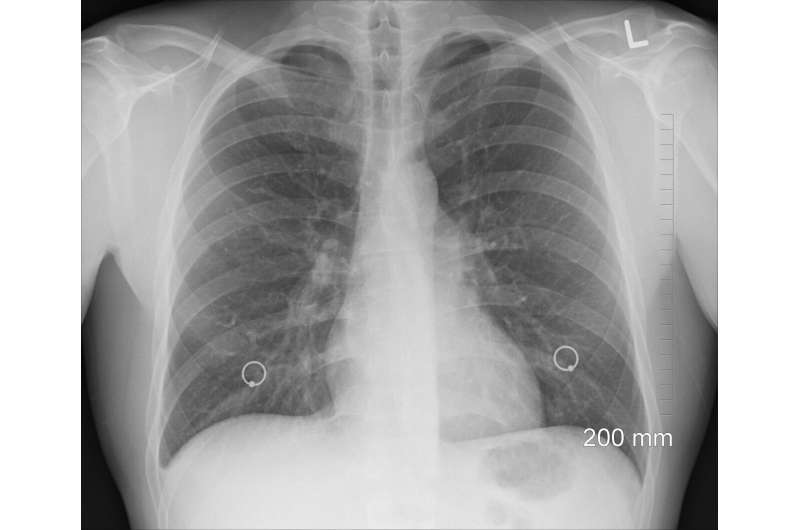This article has been reviewed according to Science X's editorial process and policies. Editors have highlighted the following attributes while ensuring the content's credibility:
fact-checked
peer-reviewed publication
trusted source
proofread
Proactive patient education and recruitment can help improve lung cancer screening rates in primary care setting

Researchers examined the impact of a proactive patient education/recruitment program in a primary care setting on improving screening rates by low-dose computed tomography (LDCT) for lung cancer. They used a nurse navigator to help identify eligible patients for screening from the EMR and to contact them directly to provide preliminary pre-screening counseling and education on screening and smoking cessation.
Of the 451 current/former smokers in the study's retrospective phase, 184 were eligible for LDCT. Of the 184 patients, 34 had LDCT ordered; 32 completed LDCT; and 10 had a lesion, while 150 did not undergo LDCT. In the prospective phase, among the 451 current/former smokers, 189 were eligible for screening; 22 had LDCT; 17 had a diagnostic CT; and 150 required LDCT. The nurse navigator identified an additional 56 patients as eligible upon contacting those with incomplete smoking histories. In total, 206 patients were eligible for LCDT, an increase of 37.3% compared to the retrospective phase. Of the 206 eligible patients, 122 verbally agreed to screening; 94 met with their physician; and 42 were prescribed a LDCT.
Researchers found that using a proactive education/recruitment model identified 37.3% more eligible patients for LDCT. Fifty-nine percent of eligible patients verbally agreed to a screening. The authors argue that it is essential to identify strategies, like the ones that they used, to increase LDCT screenings among willing and eligible patients.
While lung cancer is a leading cause of cancer deaths, in 2011 the National Lung Screening Trial showed a 20% reduction in lung cancer mortality with the use of an annual low-dose computer tomography (LDCT) screening. Despite Medicare coverage for LDCT screening, only a small percentage (5.8%) of eligible individuals received the life-saving screening in 2022.
Study authors find that through the use of proactive education and recruitment strategy, administered with the help of a nurse navigator, more eligible individuals can be identified, learn more about the screening process, and undergo the procedure.
More information: Sowmyanarayanan Thuppal et al, Proactive Recruitment Strategy for Patient Identification for Lung Cancer Screening, The Annals of Family Medicine (2023). DOI: 10.1370/afm.2905















